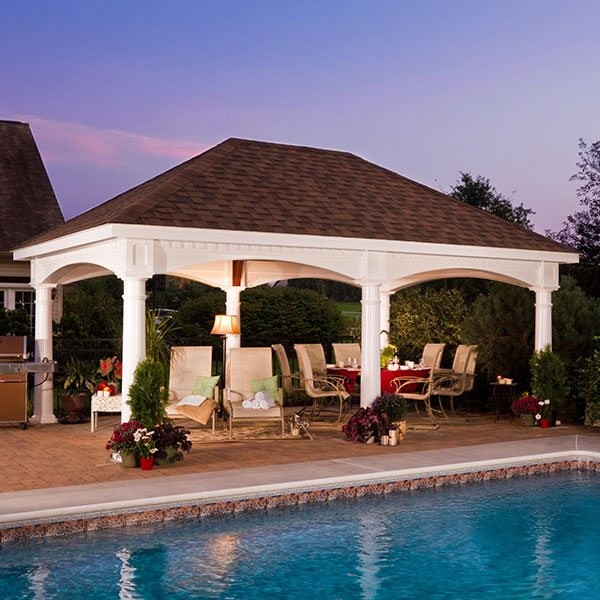The word “pavilion” might conjure images of a simple structure in a park. However, a pavilion is much more versatile and can take on many forms and functions. Let’s explore the world of pavilions, from their historical roots to modern applications and design considerations.
A Brief History of the Pavilion
In architectural terms, a pavilion is a secondary building that’s either detached or connected to a main structure. Historically, pavilions have served various purposes. In the 18th century, they were often small garden buildings or rooftop rooms in large houses, frequently used for recreation, relaxation, or even as banqueting houses.
Today, the use of pavilions has greatly expanded. They can be found in public spaces like county and baseball parks, next to swimming pools, and increasingly, as stylish additions to residential backyards.
Modern Pavilion Applications
The modern backyard pavilion is a versatile structure with countless uses. Some popular applications include:
- Outdoor Kitchens: Pavilions provide a covered space for cooking and dining outdoors.
- Poolside Bars: A pavilion can create a stylish and functional poolside bar area.
- Backyard Dining Spaces: Pavilions offer a comfortable and sheltered area for family meals and entertaining guests.
- Poolhouses & Storage: Enclosed pavilions can serve as poolhouses or storage for outdoor equipment.
For commercial properties, pavilions are a popular choice for creating picnic areas and outdoor event spaces.
Wood vs. Vinyl Pavilions: Which is Right for You?
Pavilion kits are available in two primary materials: wood and vinyl.
-
Wood Pavilions: Typically constructed from cedar or #1 southern yellow pine, wood pavilions offer a warm, natural aesthetic. You can maintain the natural look or choose from a variety of wood stains to achieve the desired color. Wood pavilions are a great option for achieving a rustic or traditional style.
-
Vinyl Pavilions: Vinyl pavilions offer a sleek, modern appearance. A significant advantage of vinyl is its low-maintenance nature, eliminating the need for regular staining. Vinyl is a durable and weather-resistant material.
Choosing the Right Pavilion for Your Backyard
Selecting the right pavilion depends on your personal style and the overall aesthetic of your property. Consider these factors:
- Your Style Preferences: Do you prefer traditional or modern designs?
- Your Home’s Architecture: Choose a pavilion style that complements your house.
- Furniture Style: Select a pavilion that harmonizes with your existing outdoor furniture.
Here’s a look at some popular pavilion styles:
Traditional Pavilions
Hampton and Traditional Pavilions:
The Hampton and Traditional pavilions share a similar classic and elegant design. Both can transform any backyard into a luxurious retreat. While similar in appearance, there are distinctions to consider.
Grand Estate:
As the name suggests, the Grand Estate pavilion exudes a regal presence. If you seek a classic aesthetic with a grand scale, the Grand Estate is an excellent choice. It offers a spacious area with larger spans, creating a truly stylish appearance.
Alpine Pavilion:
For those who appreciate a rustic, old-world charm, the Alpine pavilion is a fantastic option. With its impressive spacious ceilings and robust lumber construction, the Alpine creates a welcoming and comfortable atmosphere. It provides a more substantial look, similar to the Grand Estate, but with a spacious ceiling design.
Modern Pavilions
Santa Fe:
The Santa Fe line embodies modern design. With their unique shapes and sizes, Santa Fe pavilions can instantly add a contemporary touch to any space. The clean lines and slanted roof create a stunning backyard focal point.
Pavilion Installation Considerations
Before purchasing a pavilion, carefully consider its size and placement. Pavilion kits are easily installed on existing decks or patios. Alternatively, you can build a pavilion on a new brick paver patio or concrete slab. Proper site preparation is crucial for a successful installation. Ensure you follow the recommended guidelines for preparing your backyard for a new pavilion.
In conclusion, “What Is A Pavilion?” It’s a versatile outdoor structure with a rich history and diverse modern applications. Choosing the right pavilion for your needs involves considering factors like material, style, and location. With careful planning, a pavilion can enhance your outdoor living space and provide years of enjoyment.
